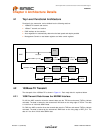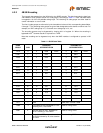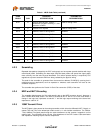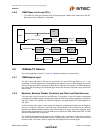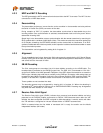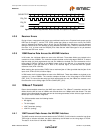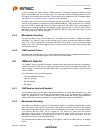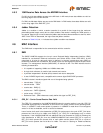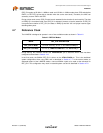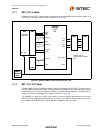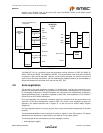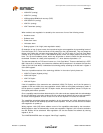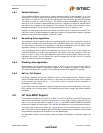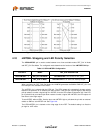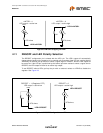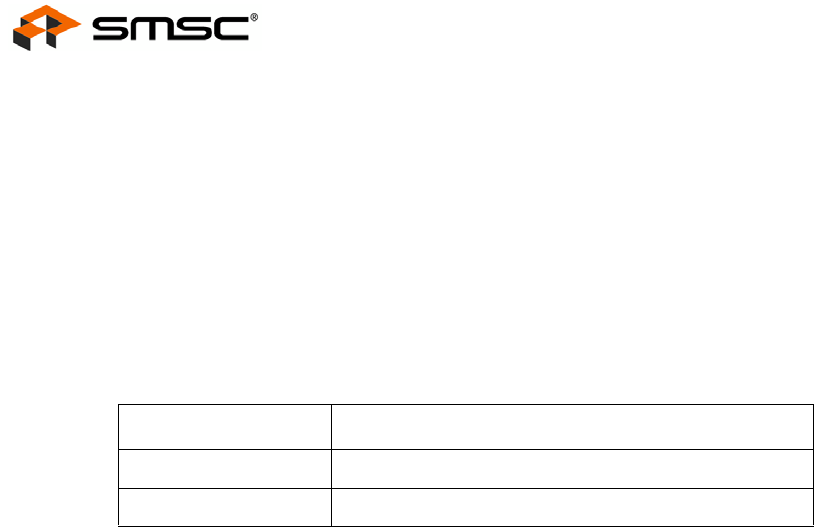
Small Footprint RMII 10/100 Ethernet Transceiver with HP Auto-MDIX Support
Datasheet
Revision 1.0 (05-28-09) 26 SMSC LAN8720/LAN8720i
DATASHEET
CRS_DV toggles at 25 MHz in 100Mb/s mode and 2.5 MHz in 10Mb/s mode when CRS ends before
RXDV (i.e. the FIFO still has bits to transfer when the carrier event ends.) Therefore, the MAC can
accurately recover RXDV and CRS.
During a false carrier event, CRS_DV shall remain asserted for the duration of carrier activity. The data
on RXD[1:0] is considered valid once CRS_DV is asserted. However, since the assertion of CRS_DV
is asynchronous relative to REF_CLK, the data on RXD[1:0] shall be “00” until proper receive signal
decoding takes place.
4.7 Reference Clock
The LAN8720 is designed to operate in one of two available modes as shown in Table 4.2.
During start-up, the LAN8720 monitors the LED2/nINTSEL pin to determine which mode has been
configured as described in Section 4.10.
In the first mode, the 50MHz REF_CLK is driven on the XTAL1/CLKIN pin. This is the traditional
system configuration when using RMII, and is described in Section 4.7.1. In the second mode, an
advanced feature of the LAN8720 allows a low-cost 25MHz crystal to be used as the reference for
REF_CLK. This configuration may result in reduced system cost and is described in Section 4.7.2.
Table 4.2 REFCLK Modes
MODE REF_CLK DESCRIPTION
REF_CLK In Mode Sourced externally, driven on the XTAL1/CLKIN pin
REF_CLK Out Mode Sourced by LAN8720/LAN8720i at the REFCLKO pin



